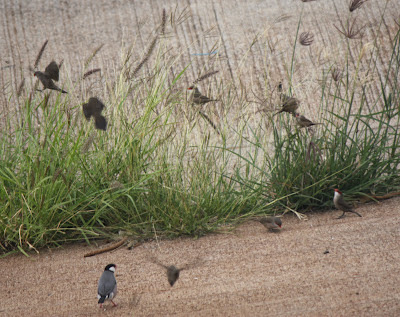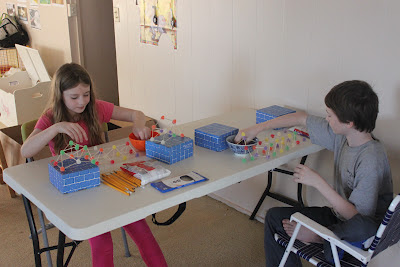M cut up straws into short pieces and used them as filler, like styrofoam peanuts, inside the cup. The egg was wrapped in a paper towel in the middle. She taped that in then lined the sides of the cup with straws against impact.
In my design the top is a 20 sided icosahedron with the egg just slightly below the center to give a "down" weighting. I taped across the top 10 faces to act as a parachute (with a small gap at the apex to help stabilize it). I used the remaining tape and straws to add legs at various angles to the lowest point to break the initial impact and convert the falling motion into a roll away motion.
It unintentionally turned out looking a little like a virus particle.
Time to test them out. We started off with short drops of 3 feet and 5 feet onto concrete.
No eggs were broken so we had to move to higher drops.
Everything worked at seven feet. My virus parachuted down and rolled away. At nine feet T's contraption flew apart on impact, but the egg was unbroken! However, M's egg finally broke at the nine feet drop.
After this point we had to climb onto the garage roof to get greater height over the cement.
Tossing it off the roof at 12 feet finally broke T's egg! The virus egg did fine. It parachuted down at the same speed as before.
T and M are already demanding a rematch. They have new ideas now for modifications.





























 sz
sz





















